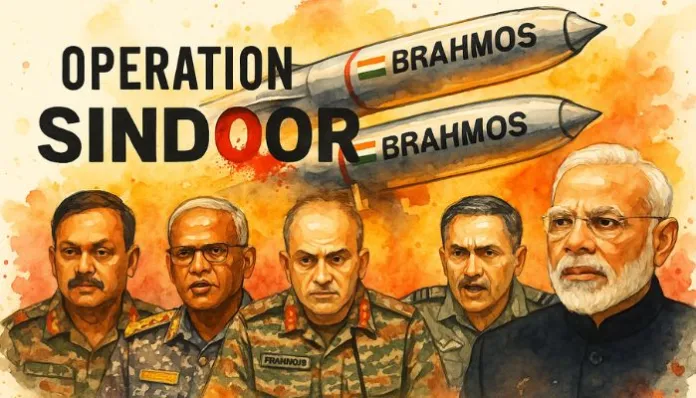Modi Govt Halted Escalation After Achieving Objectives; Pakistan Pleads for Ceasefire Amid Decisive Indian Strike
New Delhi, May 18, 2025 — After India launched a powerful missile attack on Pakistan’s Nur Khan Air Base on May 10, followed by a potential naval assault on Karachi port, Islamabad scrambled for international help—specifically from the United States—to avoid further devastation. The Indian strike, part of a rapid-response campaign following the Pahalgam massacre, demonstrated India’s superior military capabilities, leaving Pakistan in no position to retaliate.
Despite attempts by Western media to draw parity between the two nuclear-armed nations, ground reality proved otherwise. Reports suggest that Pakistan’s Director General of Military Operations (DGMO), Lt Gen Kashif Abdullah, urgently contacted his Indian counterpart at 10:38 AM, warning of retaliation but simultaneously seeking to de-escalate. The Indian side remained calm and operationally ready.
U.S. Diplomatic Push: Rubio Reaches Out
The situation grew more telling when U.S. Secretary of State Marco Rubio made immediate calls to External Affairs Minister S. Jaishankar and NSA Ajit Doval. However, Jaishankar reportedly insisted that any ceasefire proposal must come through military channels, reaffirming that India’s armed forces were in control.
Mission Accomplished Within 25 Minutes
India’s strikes on May 7 and May 10 successfully destroyed terror launchpads, 11 air bases, and key air defense installations east of the Indus River. Indian aerial platforms, loitering munitions, and precision drones outperformed expectations—even as French media downplayed the effectiveness of the Rafale jets deployed.
While Pakistan’s Chinese and Turkish-advised air defense network was either destroyed or electronically jammed, India maintained complete air superiority, capable of striking deep inside Pakistan with minimal resistance.
Why India Didn’t Escalate
Despite being fully prepared for a prolonged conflict, India chose to halt its operations. Strategic assessments concluded that further escalation would serve Pakistan’s interest by inviting sympathy from China and Western nations. With no viable military targets left and its objectives met, the Modi government refrained from allowing Islamabad to play the victim on the global stage.
🔍 Future Warfare: Drones and Standoff Weapons
Operation Sindoor reinforced India’s shift from traditional warfare to long-range precision tactics. India is now focused on enhancing its arsenal with 31 U.S.-made Predator drones (due by 2028) and domestically developed swarm drones, similar to those deployed by Pakistan with Turkish assistance.
India’s suspension of the Indus Waters Treaty, set to take effect next month, is expected to further impact Pakistan. Meanwhile, Indian strategists are also planning diplomatic and cyber responses against foreign entities that supported terrorist elements during recent escalations.


